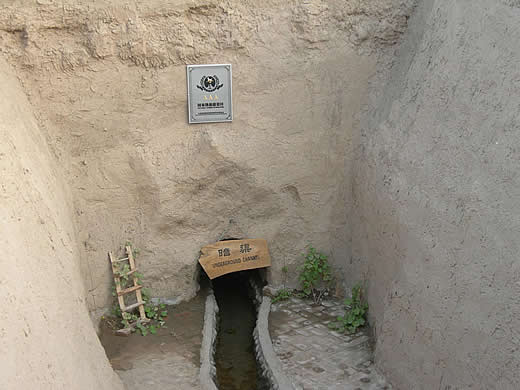The Origin of Kariz
3 min readThere are over 1000 kariz in Turpan region, among which,436 ones accountng for almost one second are in Turpan County,396 ones are in Shanshan County and 160 ones are in Toksun County. The annual total water yield of these kariz is over 500 milion m3, which exceeds the total flow of Flaming Mountain river system.
Currently, there are three versions on the origin of kariz:
The first version is that kariz was originated from the wells of the Han Dynasty (206 BC-220 AD). The representative person is Wang Guowei, the famous modern Chinese scholar. According to the relevant records on theCanals Book in the Historical Records and Biography in the Terghana, he judged that the kariz was introduced from Chinese mainland during Qin and Han Dynasties(221 BC-220 AD).

The second version is that kariz was from Persia(Iran). The reason is that Persia is the country to have the most kariz wells for 2000 years, which werebrought into Xinjiang with the spread of Islamism. Those who believed it said there was a place named “Persia Kariz”in Xinjiang. But according to the survey, Persia Kariz was located in Poskam County, just on the side of River Yarkant, where it didn’t lack of water but had high water level, then what’s the use ofthe Kariz well There is another version that because Pakistan, Afghanistan and the Former Soviet Union all called kariz wells “kariz”, thus kariz should originfrom Persia, while the earliest name of them in Persian was not “kariz”at first, therefore this version is obviously lack of evidence.
The third version is that the kariz was created by the people of Xinjiang.The reason is that summer in Turpan is very hot with average annual precipitation only 20mm, thus if there was no manual irrigation, the land couldn’t be cultivated. Then what to do? To build open channels? No ability.
Thus only building the culverts could introduce the underflow. What’s more, the people of Xinjiang had the experience to dig wells to introduce water already. Therefore, kariz was actually evolved from digging wells.
There were twice large-scale development in history for kariz, and there are two representatives, Lin Zexu and Zuo Zongtang.
Lin Zexu developed kariz wells, stressing on Yilalike which is 20km to the west of Toksun County, and his achievement was to cultivate the land of 7.3 thousand hectares.

After suppressing THE Yakoob Rebellion in the 6th year of Guangxu Reign(1880) in the Qing Dynasty, Zuo Zongtang dedicated to develop the kariz wellswith total 185 kariz wells dug. At the end of Qing Dynasty and the beginning of the Republic of China, the kariz wells in Xinjiang were mostly silted up, thus little development had been made in agriculture. The water of Turpan was as precious as oil. Wheat would be watered for every 17 days and cotton for ever 26 days. People who owned one kariz well would gain more than 50 Liang of silver for watering. In order to get rid of this situation, during this periodpeople repaired 5 original official kariz wells in Yaerhu, built Gangou kariz repaired one abandoned official kariz, established Dongkaner kariz and renovated Sandaogou and Sidaogou kariz in Yaeryazi.
After the establishment of the People’s Republic of China in 1949, the development and utilization of kariz wells came into a new stage. Before 1957, the total volume of water introduced by kariz was up to 0.367 billion cubic meters, accounting for 66.7% of the total water introduced. After the implementation of the Reform and Opening-up policies in China in 1978, theeconomy developed rapidly, and the scientific technology developed clearly and people started to build reservoir and open channels(anti-leakage channels) and drill motor-pumped wells and so on, thus the effect of kariz reduced gradually. The method to introduce water with kariz was too primitive, highly costly and slow, therefore it grew less important. At present, many kariz wells in Turpan dried out, only accounting for 24% of the actual water consumption.
Maybe one day kariz will totally lose its effect, but as the cultural relics, it will stand on the great land to witness the civilization development of human kind.









